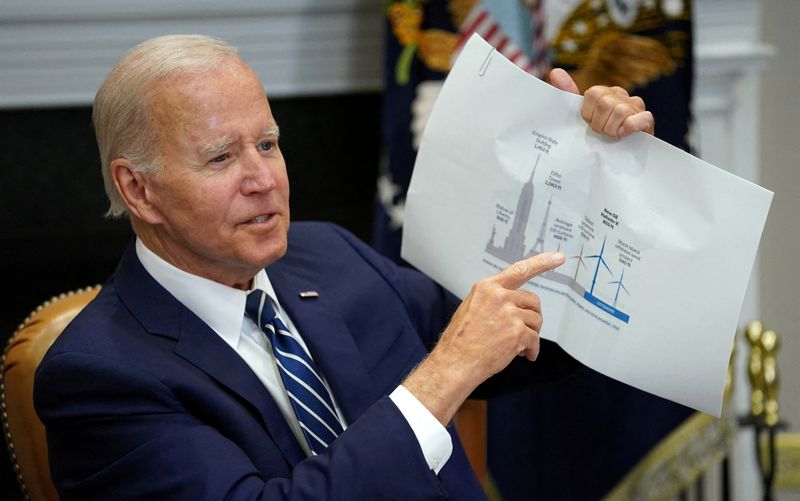By Nichola Groom
(Reuters) -A Biden administration auction of offshore wind development rights in the Gulf of Maine drew $21.9 million in high bids for half of the eight areas offered, the U.S. Bureau of Ocean Energy Management said on Tuesday.
Offshore wind developers Avangrid (NYSE:) and Invenergy each walked away with two leases following one round of bidding. They were among 14 companies that had been qualified to bid at the sale.
Once developed, the lease areas have the potential to power more than 2.3 million homes, according to BOEM.
The sale was viewed as a key test of industry appetite for new investment after a year of high-profile setbacks. It was also an opportunity for the sector to demonstrate interest in the future of floating wind turbines, an emerging technology required in the area’s deep waters.
The auction was the last before U.S. President Joe Biden, a Democrat, leaves office in January.
Former President Donald Trump, the Republican nominee in next week’s presidential election, has vowed to stop offshore wind projects if he defeats Democratic Vice President Kamala Harris in the Nov. 5 election.
Biden has made offshore wind a cornerstone of his plan to decarbonize the electricity grid by 2035. But soaring costs, supply chain challenges and a construction accident have slowed development and cast doubt on his administration’s target to install 30 gigawatts of offshore wind this decade.
Avangrid won two leases off the coast of Massachusetts, where the company is developing other offshore wind projects. Invenergy won a lease off the coast of Massachusetts and another off the coast of Maine.

The U.S. Northeast is generally viewed as an attractive market for offshore wind developers because many states have passed laws mandating procurement of the resource to meet climate change goals. Maine, for instance, has a goal to install 3 GW of offshore wind by 2040. Massachusetts is a leader in offshore wind with a target of 5.6 GW by 2027.
Industry malaise has scuttled two offshore wind auctions this year in the Gulf of Mexico and Oregon, regions without offshore wind mandates.


